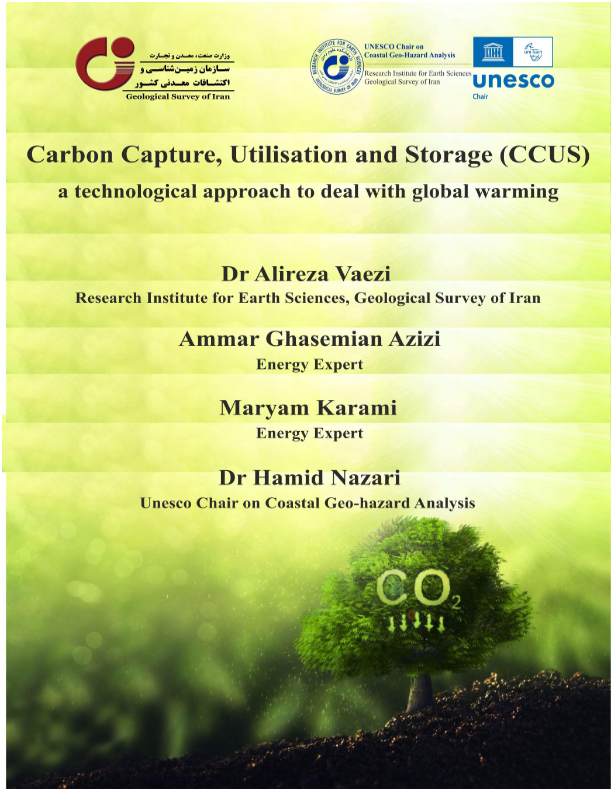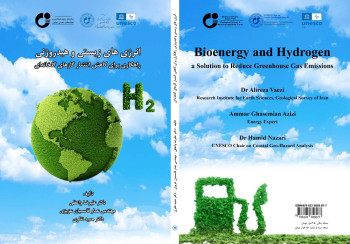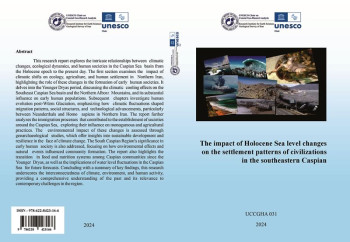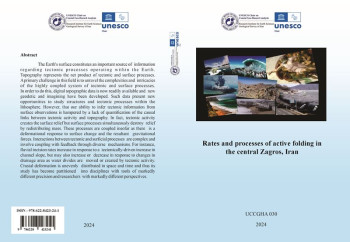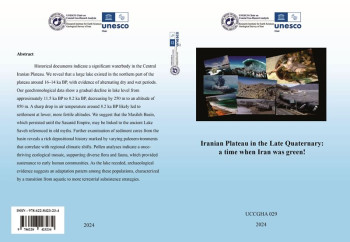Carbon Capture, Utilisation and Storage (CCUS)- A Technological Approach to Deal whit Global Warming Preface:
Human industrial activities have significantly increased the emission of greenhouse gases, leading to global temperature rise. This challenge has raised concerns about the future of the planet and human survival.
Major greenhouse gases include carbon dioxide, methane, water vapor, ozone, and nitrogen oxides. Among these, carbon dioxide is recognized as a key factor that humans release in significant amounts into the atmosphere, causing climate changes.
According to the International Energy Agency's report in 2020, industrial operations directly emit about 8 billion tons of carbon dioxide annually, with 70% originating from heavy industries such as cement, iron and steel, chemical productions, and petrochemicals. Taking into account the indirect CO 2 emissions, the industry accounts for nearly 40% of the global CO 2 emissions from human activities. With an expected increase of approximately 2 billion in the global population by the mid-century, the demand for industrial products such as food, clothing, housing, transportation, and entertainment will rise. This increasing demand, if continued on the current trend, will lead to an increase in CO 2 production. Projections indicate a rise in direct CO 2 emissions from around 8 billion tons per year to approximately 10 billion tons by 2060. To achieve climate goals, greenhouse gas emissions must be reduced to around 4.7 billion tons per year by 2060, and the industry must not exceed this limit.
Believing in the substantial expansion of the industry until then, not only must we support industrial growth, but we must also halve the direct emissions of greenhouse gases. Data emphasize the necessity of embracing new technologies to achieve "net-zero emissions" and underline the vital role of technological advancement in addressing this issue.
Climate change is a global issue that transcends specific geographical and political boundaries, demanding effective collaboration and action from all countries worldwide. Moving towards this direction will soon become imperative for all nations, requiring technical, engineering, and scientific elites to exert their utmost efforts for comprehensive progress in this field. It is not far-fetched to imagine that phrases like environmental sanctions or sanctions arising from climate change could echo in the near future, and countries' lag in this field could have consequences in the future, leading to political pressures to achieve net-zero emissions.
The importance of combating continued CO 2 emissions has grown to the extent that numerous organizations are actively engaged in extensive activities to present solutions towards achieving net-zero emissions for global security. The authors of this book, drawing on their expertise and knowledge in climate change, technical and engineering fields, industrial and technological sectors, firmly believe that Carbon Capture, Utilization, and Storage (CCUS) plays a key and fundamental role in reducing greenhouse gas emissions and achieving the goal of net-zero emissions. They predict that CCUS-related technologies will mature and widely be utilized globally between 2040 and 2050.
Currently, the oil and gas industry, as well as the electricity production industry, show the most interest in CCUS and are steadily developing in this regard. These two industries accounted for the majority of CCUS-related projects in 2020. The CCUS industry is entering a new phase of industrialization where it is expanding into various industries, each of which emits CO2 in different ways, while advancing its technology day by day. For example, besides entering industries such as cement and iron and steel, CCUS is also venturing into emerging industries like blue hydrogen. The world's first large-scale commercial project utilizing CCUS technology at power plants was successfully implemented in Canada in 2014 under the project name " SaskPower's Boundary Dam".
It is anticipated that the number of active units will see a 70% increase in the next decade, reaching around 120 projects by 2030. The average size of CCUS units is expected to see significant improvements, with the volume of these activities rising from under one million tons per year to around five million tons per year by the end of this decade. Developments in large-scale projects and hubs producing blue hydrogen will be instrumental in achieving this increase in capacity. This development is driven by legal pressures to reduce emissions. Legal pressures such as carbon taxes or the goal-setting of some countries to achieve net-zero emissions are examples of legal pressures that governments and various organizations pay attention to. According to the Net-Zero Emissions (NZE) scenario, about 8% of the total cumulative emission reduction by 2050 will be accomplished by CCUS technology.
This significant share has been calculated, taking into account the CO 2 -rich streams in many industries. Industries are responsible for nearly half of energy consumption, CO 2 emissions, and raw material use.
Achieving a sustainable industry is a large-scale task that relies on making long-term, short-term, and continuous tough decisions. Making the right decisions not only requires statistical and numerical awareness but also an insight into how to develop value chains for industrial companies, their suppliers, and other stakeholders. Traditionally, the industry has relied on fossil fuel-based raw materials such as coal, oil, and gas. Their operations and infrastructure have been firmly based on these raw materials for decades. The current challenge lies in transforming industries, finding new ways towards a carbon-neutral industry, countering fossil energy supply, and creating a sustainable and green value chain. Producing goods using sustainable and renewable energies is vital. It is incumbent upon companies to ensure that they can continue to produce goods without negative emissions. Achieving sustainability means that companies must operate in value chains different from the ones they are accustomed to. Suppliers must provide sustainable raw materials and fuels. There are many uncertainties, including the availability and supply of renewable energies and raw materials, new laws, and changing market demands.
Therefore, following a series of books published by authors under the titles: "Climate change and evolutionary trend of renewable energies" and " Bioenergy and hydrogen: a solution to reduce greenhouse gas emissions" within the Research Institute for Earth Sciences (RIES), current book serves as a comprehensive reference on the status of research, development, and demonstration of CCUS technology in the electricity and industrial sectors. Critically examining a broad spectrum of combustion-based processes post-fuel and usable technologies in fossil fuel power plants and the application of CCUS in other high-carbon-footprint industries.
This book delves into the significant concept of CCUS, a groundbreaking technology crucial in reducing greenhouse gas emissions and combating climate change. Authors from the Research Institute for Earth Sciences (RIES), Geological Survey of Iran, and UNESCO Chair on Coastal Geo-Hazard analysis bring their expertise to provide a comprehensive overview of CCUS, exploring its various aspects, challenges, and potential applications.
The writing focuses on the fundamental principles of CCUS and explains various methods of capture, utilization, and storage in detail. The authors also discuss the economic and environmental considerations surrounding CCUS, analyzing its costs, benefits, and social implications. They deliberate on the vital role of international collaboration in advancing CCUS technology and promoting its widespread acceptance.
This book serves as a valuable resource for researchers, policymakers, industry specialists, and anyone seeking to understand the potential of CCUS in reducing climate changes and building a sustainable future. In other words, this text aims to elucidate the importance of reducing greenhouse gas emissions and completing the cycle of sustainable development, subsequently fostering climate resilience. The authors strive to present a simple overview of the role and significance of CCUS on an industrial scale to all stakeholders, especially the academic community, policymakers, and senior managers in vital industries such as oil, gas, petrochemicals, steel, cement, electricity production, and all those who care deeply about the future of Iran!
